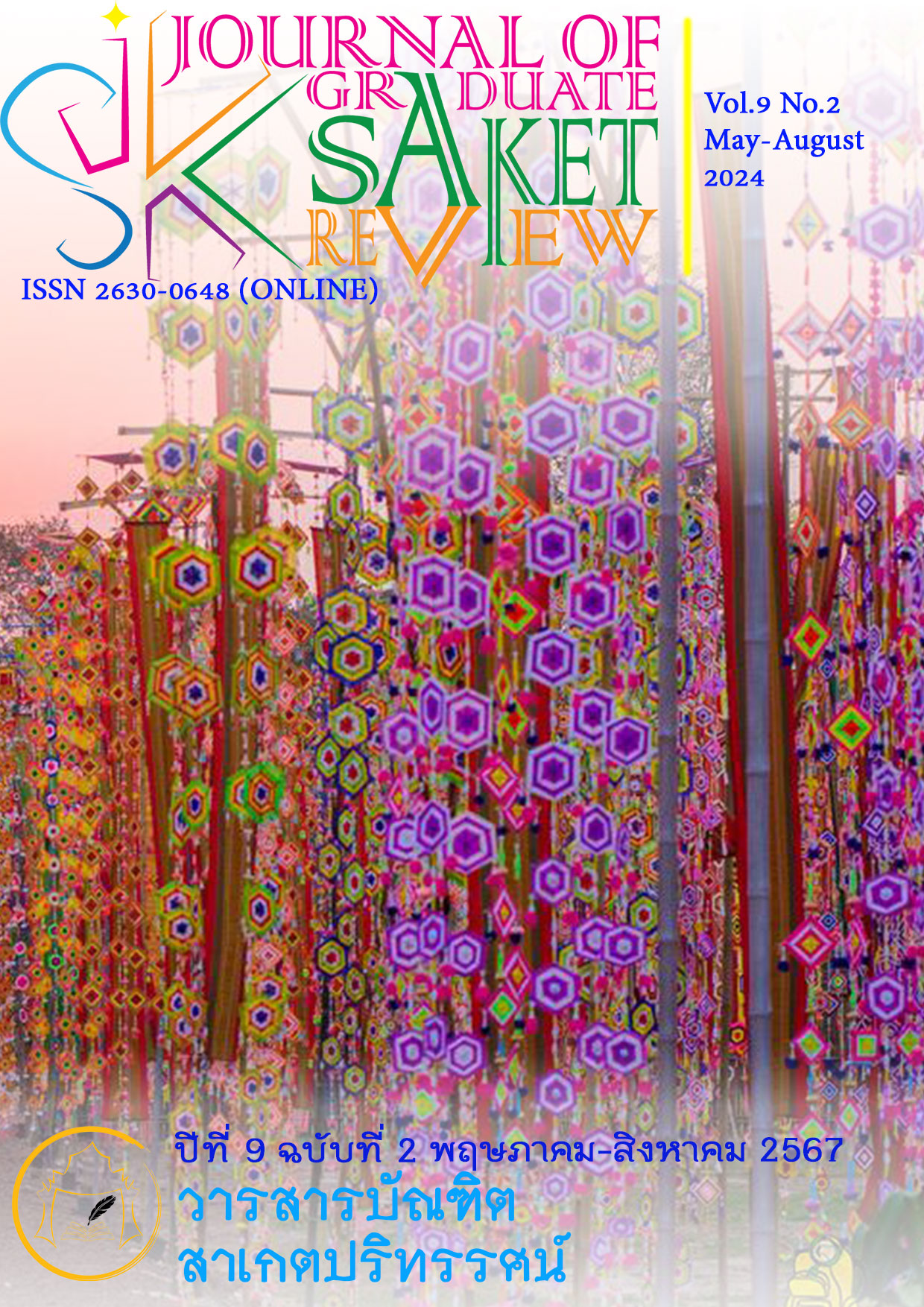การจัดการเชิงกลยุทธ์ของสภาพแวดล้อมที่สร้างขึ้นในอดีตและความยั่งยืนตามแนวคิดซิมไบโอซิส : กรณีศึกษาอาคารสาธารณะในชนบทในกานซู่ ชิงไห่ และหนิงเซี่ย ประเทศจีน
Main Article Content
บทคัดย่อ
การวิจัยครั้งนี้ผู้วิจัยใช้วิธีผสมผสานระหว่างเชิงคุณภาพและเชิงปริมาณ มีวัตถุประสงค์ที่จะศึกษา 1) เพื่อศึกษาประวัติศาสตร์ ค้นหาคุณค่าความสำคัญในฐานะมรดกทางศิลปะวัฒนธรรมของพื้นที่กานซู่ ชิงไห่และหนิงเซี่ยหุย ใช้วิธีการเลือกแบบเจาะจง การพรรณาข้อมูลใช้เอกสารจากนักวิชาการที่ทำการรวบรวมไว้นำมาศึกษาวิเคราะห์ ด้านประวัติศาสตร์ ส่วนด้านคุณค่าทางศิลปวัฒนธรรม ใช้ประชากรกลุ่มตัวอย่างจากนักประวัติศาสตร์ นักประวัติศาสตร์ศิลปะ ของพื้นที่เป็นหลัก 2) เพื่อศึกษาวิเคราะห์ประเมินคุณค่าทางประวัติ ศาสตร์ ศิลปวัฒนธรรม ประเมินเปรียบเทียบอาคารสาธารณะที่ปรากฎอยู่ในพื้นที่ แนวทางการจัดการเชิงกลยุทธ์สภาพแวดล้อมและความยั่งยืนตามแนวคิดซิมไบโอซิส ผู้วิจัยประเมินจากกลุ่มประชากรเจ้าหน้าที่ภาครัฐที่มีหน้าที่ดูแลชุมชน ผู้ประกอบการค้าในชุมชน บุคคลที่มีความรู้ภูมิปัญญาในท้องถิ่นโดยการชี้นำของชุมชน ผู้เชี่ยวชาญเกี่ยวกับประวัติศาสตร์และองค์ประกอบทางสังคมโจวตะวันตก จำนวน 4 กลุ่ม โดยทุกกลุ่มคัดเลือกมากลุ่มละ 15 คน ใช้ทฤษฎีแนวคิดประเด็นการจัดการที่ยั่งยืน แนวคิดซิมไบโอซิส จากนักวิชาการเป็นหลักการศึกษา และ 3) เพื่อเสนอแนวทางใหม่เพื่อการจัดการเชิงกลยุทธ์ของสภาพแวดล้อมที่สร้างขึ้นในอดีตและความยั่งยืนตามแนวคิดซิมไบโอซิส อาคารสาธารณะในชนบทในกานซู่ ชิงไห่ และหนิงเซี่ย ประเทศจีน
ผลการศึกษาพบว่า ประวัติศาสตร์ของพื้นที่ในกานซู่ ชิงไห่และหนิงเซี่ย ตั้งในภูมิภาคตะวันตกพื้นที่เป็นภูเขา ทุ่งหญ้า ทะเลทราย เป็นเส้นทางสายไหมที่มีการแลกเปลี่ยนอารยธรรมตะวันตกกับตะวันออก จึงมีสถาปัตยกรรมสาธารณะ ที่สร้างขึ้นเป็นจำนวนมากและมีคุณค่าทางประวัติศาสตร์ การที่จะจัดการเชิงกลยุทธ์ของสภาพแวดล้อมตามแนวคิดไบโอซิส จำเป็นต้องคำนึงถึงปัจจัย ด้านคุณลักษณะของภูมิภาค ความต้องการของชุมชน และมรดกทางวัฒนธรรม และกำหนดกลยุทธ์และมาตรการให้สอดคล้องกับสถานการณ์จริงให้ยั่งยืนต้องสร้างบนแนวคิดของการพึ่งพาอาศัยกัน ต้องปรับปรุงคุณภาพสิ่งแวดล้อมของอาคารสาธารณะในชนบท ส่งเสริมการพัฒนาชุมชน และการปกป้องมรดกทางวัฒนธรรมตามหลักวิชาการ
Article Details

อนุญาตภายใต้เงื่อนไข Creative Commons Attribution-NonCommercial-NoDerivatives 4.0 International License.
เนื้อหาและข้อมูลในบทความที่ลงตีพิมพ์ในวารสารบัณฑิตสาเกตปริทรรศน์ ถือเป็นข้อคิดเห็นและความรับผิดชอบของผู้เขียนบทความโดยตรงซึ่งกองบรรณาธิการวารสาร ไม่จำเป็นต้องเห็นด้วย หรือร่วมรับผิดชอบใด ๆบทความ ข้อมูล เนื้อหา รูปภาพ ฯลฯ ที่ได้รับการตีพิมพ์ในวารสารบัณฑิตสาเกตปริทรรศน์ ถือเป็นลิขสิทธิ์ของวารสารบัณฑิตสาเกตปริทรรศน์ หากบุคคลหรือหน่วยงานใดต้องการนำทั้งหมดหรือส่วนหนึ่งส่วนใดไปเผยแพร่ต่อหรือเพื่อกระทำการใด ๆ จะต้องได้รับอนุญาตเป็นลายลักอักษรจากวารสารบัณฑิตสาเกตปริทรรศน์ ก่อนเท่านั้น
เอกสารอ้างอิง
B.M. Felton, C.H. Chen. (1986), European concepts on the conservation of heritage buildings [J]. World Architecture.
BI Bingshi, MEI Hongyuan. (2015), Constructing a framework for research on symbiotic design of cold land architecture and environment[J]. Times Architecture.
Chen Sicheng. (2017), Research on the regeneration of traditional architectural space based on the concept of "old and new" symbiosis[D]. Suzhou: Soochow University.
Duan Degang, Cai Zhongyuan, Wu Feng. (2009), Learning from Indigenous--Review of the Teaching Complex of Yuhu Primary School under Yulong Snow Mountain[J]. Architecture and Culture.
Feng Yijun. (2008), Research on spatial composition of traditional Chinese architectural mood [D]. Suzhou: suzhou university.
Feno. (2006), The foot of the snowy mountain "Yuhu Completion Primary School" [J]. China Construction.
Fritz Auweck. (2016), The Rebirth of Traditional Villages [J]. Chinese Folk Habitat.
Han Sen. (2000), The Inspiration of "Symbiosis" Thought--Feelings on Two Contacts with Mr. Kisho Kurokawa [J]. Chinese and Foreign Architecture.
Hao Lin. (2012), The Hidden House--Place Innovation and Sustainability [J]. Architectural Knowledge.
Nie Chen, Yang Jian, (2010). Post-disaster Reconstruction of Yangliu Village,Taiping Township, Mao County - Light Steel Structure Housing System Demonstration Ecological Reconstruction [J]. Construction Technology.
Wang Jinghui. (1987). Japan's ancient capital preservation law [J]. Urban Planning.


